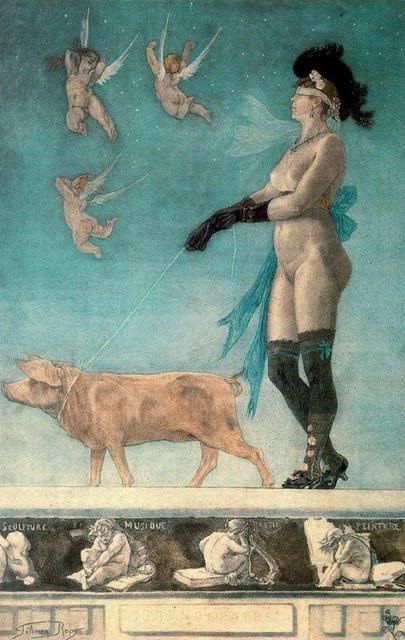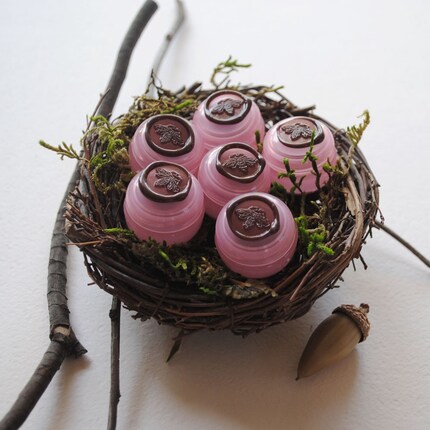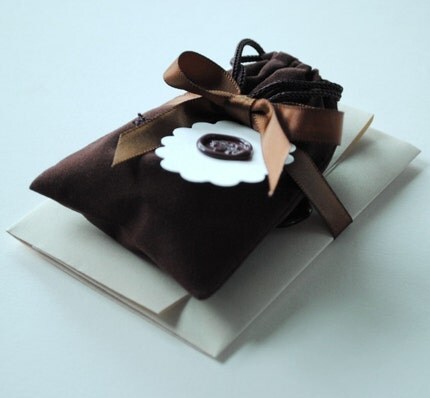But what an embarrassment of riches: Grossmith, the old English house revived by Simon Brooke, knocked on my door and I opened to see the most delicious, the most gorgeous fragrances imaginable truly classical in feel and redolent of the nostalgia of another time, overseen by Roja Dove, and fulfilling all above criteria into assigning them the best surprise of the year! So after a perusal of the history of the Grossmith house in part 1, Perfume Shrine tackles the Grossmith fragrances themselves with reviews for each one of them.

Hasu-no-Hana ~ “The scent of the Japanese Lotus Lily". "The exquisite daintiness and charm of the choisest flowers of Japan are embodied in this delightful perfume" which originated from 1888, a time in which the pioneering spirit of modern perfumery was accountable for giant leaps in the technology of scents; a year later Guerlain would issue Jicky, the world's first "modern" fragrance. The feeling of the re-issued Hasu-no-Hana is radiant, light and floral with a cool atmosphere and a very natural feel to it (a common trait in all the Grossmith re-issues; the brief must have been draconian on excellence of raw materials and Robertet -who are behind its creation- are not stingy with the precious naturals). Putting it on skin one is met with the bright, optimistic feeling of clawing one's nails on vividly hued hesperidia, the essential oils dripping down one's hands, such is the life-like effect. The floral heart with a murmur of chypre tonality isn't composed of lotus lily, rather giving the impression of one via the synergy of smooth rose, dewy jasmine and fleshy fruity ylang-ylang (and is there a soupcon of carnation too? Or clove?, i.e. eugenol in either case?); intense players stringed ever so finely. The longer the scent stays on skin the more it accumulates a very sensual, dry, almost powdery ~yet not quite~ orris-rich and woody-almondy base anchored by musks which persists delightfully. If I had to dress Hasu-no-Hana I would choose the choisiest silk kimonos in shades of ivory and dusty salmon.
Notes for Grossmith Hasu-no-Hana include bergamot, bitter orange, rose, jasmine, ylang ylang, iris, patchouli, oakmoss, vetiver, cedar, sandalwood and tonka bean.

Phul-Nana ~ “Hindi for ‘lovely flower’ takes on a more herbal/aromatic character, while still sweet floral and with a warm, cuddly base. The original came from 1891 accompanied with images of Indian princesses well ahead of Shalimar and its own abode of love. "From the Orient's wealth of fragrance the sweetest of all was captured and named Phul-Nana. It is wonderfully lasting and refreshing". The combination of hesperidic notes (rich bergamot, orange and the lightness of the neroli extract from bitter orange blossoms) allied to a rich, lush heart of intense white flowers (the decadent tuberose, the intensely heady jasmine-y bouquet as well as the rosiness that is aided to unfurl endless by the addition of patchouli leaves) leaves me with renewed admiration for the use of precious naturals: Anyone who has experienced the essences first hand can see how the thing is living, breathing and sighing its bosom like a woman in love. The milky base (woody and vanillic with equal lashings of resinous dryness thanks to the opoponax) is indeed a nod to the oriental genre as defined by Shalimar and people who love the latter will find a drydown to swoon over.
Notes for Grossmith Phul-Nana include bergamot, orange, neroli, geranium, tuberose, ylang ylang, patchouli, benzoin, cedar, sandalwood, opoponax, tonka bean and vanilla.
 Shem-el-Nessim ~ “Arabic for ’smelling the breeze’, is perhaps my top pick, if I someone pointed a gun on my head urging me to choose only one among the excellent specimens in the re-issued trio. Rarely has a scent captivated me as instantly as Shem-el-Nessim did, reprising a well-rounded tune, that of literally earthbound orris (alas down-marketed in several mainstream releases these past two years) and exalting it to the heavens above via the use of a little lilac overtone and greenery. The original Shem-el-Nessim came out in 1906, signifying the fêted femininity of the Edwardian era, a nod to Europe's emerging love with anything oriental that would culminate in the Art Deco period. Named after an Arabian Springtime festival held in Egypt on the Nile, it was advertised with dark-haired sexy lovelies in salwar kameez, hair in a turban and the seven veils of Salome dropping one by one in our fertile imagination. The rebirth is a reworking of the floriental genre à la L'origan allegedly, or the triumph of the impressionistic suspension of time in L'Heure Bleue in my opinion~one could argue without blushing that it is the loveliest rendition of heliotrope and iris to be launched in the last decade! A clearly pyramidal composition, it dazzles with its economy of structure and the delight of its affluent feel, like a mink wrap in winter. The overture has all instruments murmur a soft muted tune signifying phase one (soft greenery, florals) . Then the aria of marzipan-like heliotrope emerges in all its glory, the leitmotif comes again and again for hours: luxurious, warm, inviting, powdery. The whole melts into an unctuous coda of orientalised elements in the base, almost ambery: sandalwood, musk and vanilla, amplifying the plush to the point of apotheosis. I am smitten!!
Shem-el-Nessim ~ “Arabic for ’smelling the breeze’, is perhaps my top pick, if I someone pointed a gun on my head urging me to choose only one among the excellent specimens in the re-issued trio. Rarely has a scent captivated me as instantly as Shem-el-Nessim did, reprising a well-rounded tune, that of literally earthbound orris (alas down-marketed in several mainstream releases these past two years) and exalting it to the heavens above via the use of a little lilac overtone and greenery. The original Shem-el-Nessim came out in 1906, signifying the fêted femininity of the Edwardian era, a nod to Europe's emerging love with anything oriental that would culminate in the Art Deco period. Named after an Arabian Springtime festival held in Egypt on the Nile, it was advertised with dark-haired sexy lovelies in salwar kameez, hair in a turban and the seven veils of Salome dropping one by one in our fertile imagination. The rebirth is a reworking of the floriental genre à la L'origan allegedly, or the triumph of the impressionistic suspension of time in L'Heure Bleue in my opinion~one could argue without blushing that it is the loveliest rendition of heliotrope and iris to be launched in the last decade! A clearly pyramidal composition, it dazzles with its economy of structure and the delight of its affluent feel, like a mink wrap in winter. The overture has all instruments murmur a soft muted tune signifying phase one (soft greenery, florals) . Then the aria of marzipan-like heliotrope emerges in all its glory, the leitmotif comes again and again for hours: luxurious, warm, inviting, powdery. The whole melts into an unctuous coda of orientalised elements in the base, almost ambery: sandalwood, musk and vanilla, amplifying the plush to the point of apotheosis. I am smitten!!Notes for Grossmith Shem-el-Nessim feature bergamot, neroli, geranium, jasmine, rose, ylang ylang, orris, musk, patchouli, cedar, sandalwood, heliotrope and vanilla.
Grossmith fragrances are now available through Roja Dove Haute Parfumerie, Fortnum & Mason (who also carried the classic line!) and at Les Senteurs (Belgravia, London), all in the UK. Plans for expanding abroad are carefully being considered for the future. Grossmith Phul-Nana, Shem-el-Nessim and Hasu-no-Hana are available in 50 or 100 ml Eau de Parfum (£95-185 respectively, with the option of a coffret of all three in 50 ml for £310), also in 10ml or 100 ml Parfum (£110-425 respectively, a coffret of all 3 scents in 10 ml is £365), or in the 85 ml Parfum in the limited edition Baccarat bottle etched in pure gold for £5750.
Click on the pics to enlarge them.
Related reading on Perfume Shrine: Grossmith: the history
In the interests of full disclosure I was sent a trio of sample vials by the manufacturer.
.jpg)

.jpg)
.jpg)
.jpg)
.jpg)




.jpg)



.jpg)
.jpg)



.jpg)
.jpg)







%2Bby%2BGuido%2BMocafico%2B(b.%2B1962)%2C%2B%2Ban%2BItalian-Swiss%2Bphotographer%2Bliving%2Bin%2BFrance%2B(Parenthetically.blogspot).jpg)




